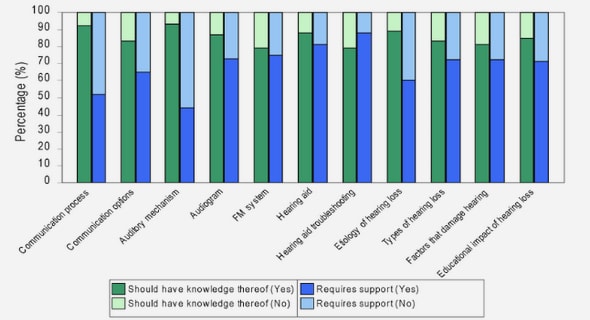(Downloads - 0)
For more info about our services contact : help@bestpfe.com
Table of contents
Chap. 1- LATE QUATERNARY ENVIRONMENTAL CHANGES AND THE CLIMATE SYSTEM
1.1 The originality of Quaternary climate variability
1.2 Introduction to the climate system
1.3 Paleo-environmental evidences of Quaternary environmental changes
1.4 Climatic tales from EPICA Dome C ice core
References
Chap. 2- TRACE ELEMENTS, TODAY AND IN THE PAST
2.1 History of trace elements production and their use
2.2 Aerosols
2.3 Natural emissions of trace elements into the atmosphere
2.3.1 Mineral aerosols
2.3.2 Sea salt spray
2.3.3 Volcanic aerosols
2.3.4 Biogenic sources
2.4 Anthropogenic emissions of trace elements into the atmosphere
2.5 Atmospheric transport of aerosols
2.6 Literature review
2.6.1 The first reliable evaluation of trace elements concentration in polar snow and ice
2.6.2 Studies of trace elements in Greenland and Antarctica
Chap. 3- IDENTIFICATION OF CRUSTAL TRACE ELEMENTS ORIGIN THROUGH THE RARE EARTH ELEMENTS (REE). LEAD ISOTOPE SIGNATURE
3.1 Global dust emissions at present time
3.2 Principal dust “hot spots” in the Southern Hemisphere
3.3 The dust provenance during glacial periods to the East Antarctic plateau
3.4 The dust provenance during interglacials to the East Antarctic plateau
3.5 REE in sedimentary rocks: influence of provenance
3.5.1 REE properties
3.5.2 REE and provenance studies
3.6 An introduction to the lead isotopic system
3.6.1 Lead properties
3.6.2 Lead concentration and 206Pb/207Pb ratios
3.6.3 The 206Pb/207Pb versus 208Pb/207Pb isotopic ratios
Chap. 4- MERCURY, TODAY AND IN THE PAST
4.1 Mercury properties
4.2 History of mercury production and its use
4.3 Natural release of mercury in the environment
4.4 Biogeochemical cycle of mercury
4.4.1 Atmospheric cycle
4.4.2 Mercury in water and biota
4.4.3 Mercury species in soils and sediments
4.4.4 Mercury in the cryosphere
4.5 Mercury as a global pollutant in remote environment
4.5.1 Studies of mercury in the Arctic: recent studies
4.5.2 Studies of mercury in Antarctica
Chap. 5- ANALYTICAL TECHNIQUES, MATERIALS AND METHODS
5.1 The European Project for Ice Coring in Antarctica (EPICA)
5.2 Samples preparation
5.2.1 Clean conditions
5.2.2 Decontamination procedure
5.3 The Inductively Coupled Plasma Sector Field Mass Spectrometry (ICP-SFMS)
5.3.1 The ICP-SFMS configuration
5.3.2 Spectral interferences
5.4 Study of matrix effects using an ICP-SFMS: Trace elements and Rare Earth Elements
5.4.1 Trace elements
5.4.2 Rare Earth Elements
5.5 Thermal Ionisation Mass Spectrometry (TIMS)
5.5.1 Preparation of the samples for Pb isotopes determination
5.5.2 The TIMS configuration
5.5.3 Isotope dilution mass spectrometry
Chap. 6- RESULTS AND DISCUSSION ABOUT CRUSTAL TRACE ELEMENTS VARIABILITY IN EAST ANTARCTICA OVER THE LATE QUATERNARY
6.1 Concentrations in Antarctic ice back to 670 ky BP
6.2 Comparison between Vostok and Dome C for the past 420 ky BP
6.3 Crustal Enrichment Factors (EFc)
6.4 Crustal trace elements versus climate relationship
6.5 The mid-Brunhes climate shift
6.6 Observed concentrations during the successive interglacials
6.7 Observed concentrations during the successive glacial maxima
Chap. 7- CHANGES IN ATMOSPHERIC HEAVY METALS AND METALLOIDS IN DOME C (EAST ANTARCTICA) ICE BACK TO 671 KY BP
7.1 Changes in concentration during the last eight climatic cycles
7.2 Fallout fluxes for heavy metals and metalloids during the past 671 ky
7.3 Heavy metals and metalloids concentration versus deuterium
7.4 Crustal Enrichment Factors (EFc)
7.5 Contributions from rock and soil dust, sea salt spray and volcanoes
7.6 Principal Components Factor Analyses (PCFA)
7.7 Contribution from Antarctic volcanoes
7.8 Ternary diagrams for glacial maxima and interglacials before and after the Mid-Brunhes
Event (MBE)
Chap. 8- CRUSTAL TRACE ELEMENTS PROVENANCE TROUGH THE REE SIGNATURE FROM 263 TO 671 KY BP IN THE EPICA DOME C ICE CORE
8.1 Concentrations in Antarctic ice back from 263 to 671 ky BP
8.2 Comparison with dust concentration
8.3 Shale-normalized REE pattern
8.4 Comparison of REEUCC from the EPICA/Dome ice core during glacial maxima with REEUCC from potential source areas (PSAs)
8.5 Comparison of REEUCC from the EPICA/Dome ice core during interglacials with REEUCC from potential source areas (PSAs)
CHAP. 9- EIGHT GLACIAL CYCLES OF PB ISOTOPIC COMPOSITIONS IN THE EPICA DOME C ICE CORE
9.1 Sample variability
9.2 Lead and Ba concentrations
9.3 208Pb/207Pb ratios
9.4 Lead isotopic compositions
Chap. 10- INTENSE MERCURY SCAVENGING FROM DUST AND SALT LADEN ANTARCTIC ATMOSPHERE DURING THE GLACIAL AGES
10.1 Materials and Methods
10.2 Changes in concentration during the last eight climatic cycles
10.3 Contributions from natural sources to mercury budget
10.4 Contribution of Hg from the Southern Ocean to the Antarctic during glacial periods
10.5 Insoluble dust versus mercury relationship during coldest climatic stages
10.6 Modeling of the enhanced Hg during the glacial stages
Chap. 11- CONCLUSION AND OUTLOOKS
11.1 Conclusions
11.1.1 Crustal trace elements in the EPICA/Dome C ice core
11.1.2 Metals and Metalloids in the EPICA/Dome C ice core
11.1.3 REE in the EPICA/Dome C ice core
11.1.4 Pb isotopes in the EPICA/Dome C ice core
11.1.5 Mercury species in the EPICA/Dome C ice core
11.2 Outlooks
11.2.1 Metals and Metalloids
11.2.2 Crustal trace elements and Rare Earth Elements
11.2.3 Lead isotopes
11.2.4 Mercury species
References




